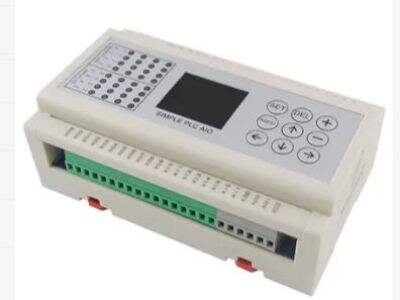Though sometimes small and simple, relays are vital components in electrical systems. At Qingjun, we understand that everything is a part of the system and contributes to its effective and safe operation. Then, we'll dive a little deeper into what relays do and why they're so important!
The Role of a Relay
In electrical systems, relays are utilized to switch a circuit on or off. A relay is best described as a more sophisticated form of circuit switch that can either turn a circuit on or off. This feature is very crucial because it only delivers electrical energy as it is necessary. This is useful for making everything in the system safer — both the machines and the people using the machines — because it reduces damage or accidents.
How a Relay Works
How does relay work on the basis of electricity and magnetism A small surging current makes its way into the relay, creating a magnetic field. It can produce a magnetic field powerful enough to draw a metal switch into contact with a stationary component called a contact. When this occurs, it completes a circuit capable of conducting a far higher level of power. These devices need this larger current to run machines or turn on devices that need to work.
Relays as Safety Helpers
Another critical role of a relay is the protection of electrical systems. This can prevent such issues as electrical failures and even fires. If, for example, there is a short circuit — where electricity goes through an unintentional path — or if too much current is passing through the circuit, the relay can cut the power very quickly before anything gets damaged. This action, taken in a matter of milliseconds, is essential to safeguard the electrical system itself and anyone working in the vicinity, so it is a key component of electrical safety.
Asking Relays to Do Things For Us
The relays are useful in automation so it can automate many tasks in an electrical system too. They can control sequences of events — for example, opening and closing doors in a factory, or turning lights on and off in a building. Used this way, relays facilitate the smoother and more efficient operation of processes. This will enable workflow to be faster, and it will reduce manual efforts and allow people to focus on something else that may need a human touch.
Different Types of Relays
There are various types of relays, each designed for specific tasks and functionalities. An even better latch example would be a latching relay, as it can not only latch masacrimn but keep-powered on even though when the electricity is entirely off. It's particularly useful in certain situations. A second variety, termed a reed relay, is used in detecting and switching based on the presence of a magnetic field. Then you have other types, one example being solid-state relays (SSRs) with no moving parts. This means they are built tough and rugged, making them dependable and hard to break down; the ones used inside factories where a lot of machines are working in parallel.
In the end, relays are very useful devices that are crucial to the smooth and effective operation of electrical systems. At Qingjun, we realize that relays are the central core based on which we integrated most of our products, and therefore we ensure that relay finds its way into each electric berth we design. Relays are primarily designed based on the requirements; therefore, their shapes and specifications are significantly different. Our mission has always been able to give our customers solutions that are safe, reliable, and convenient to use. Let us Find the component for your Electrical system so that everything works Efficiently!

 EN
EN
 AR
AR BG
BG HR
HR CS
CS DA
DA NL
NL FI
FI FR
FR DE
DE HI
HI IT
IT JA
JA KO
KO NO
NO PL
PL PT
PT RO
RO RU
RU ES
ES SV
SV TL
TL ID
ID SR
SR SK
SK SL
SL UK
UK VI
VI SQ
SQ ET
ET GL
GL HU
HU TH
TH TR
TR GA
GA MK
MK HY
HY KA
KA BS
BS MN
MN